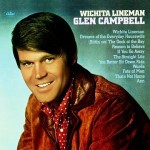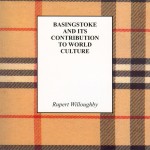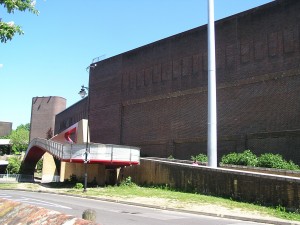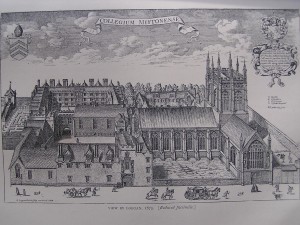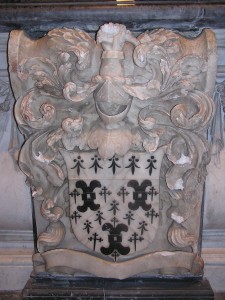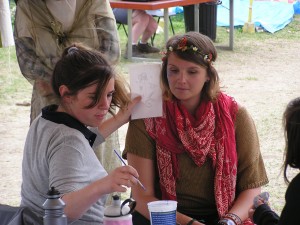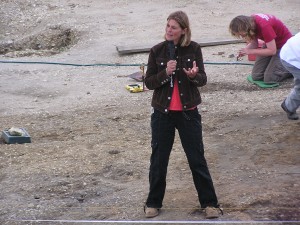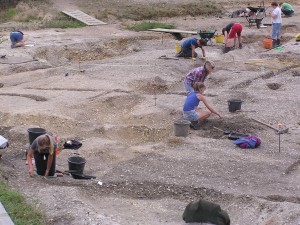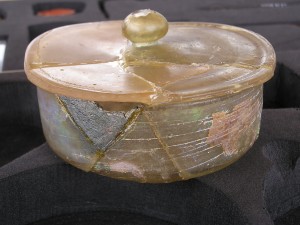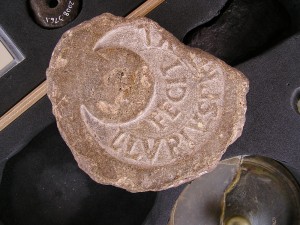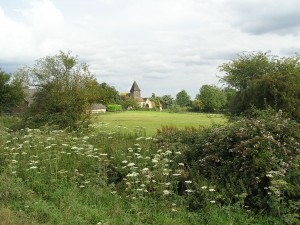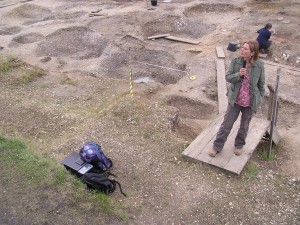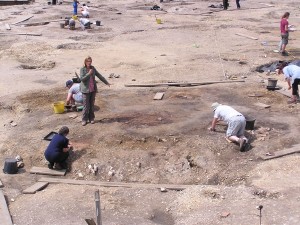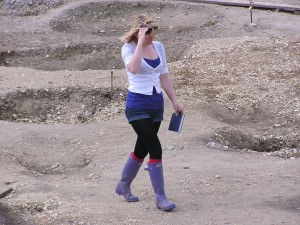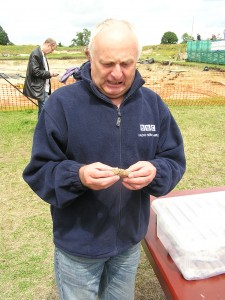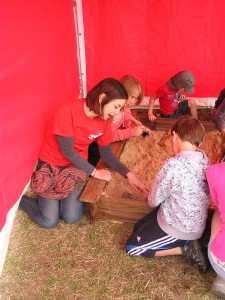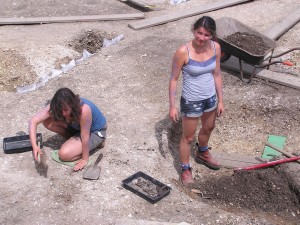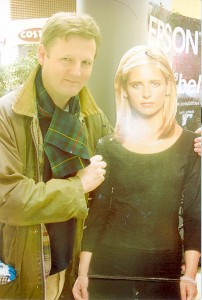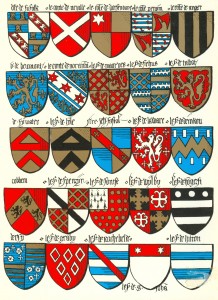
I was recently commissioned by the National CV Group to write the history of Tadley in an innovative form – that of a ‘c.v.’, as if Tadley were a person. To all appearances, the north Hampshire town is singularly unprepossessing, yet it has a unique character and an astonishingly rich history.
Tadley folk were long regarded as wild, untamed woodlanders. Before World War II, outsiders ventured there with trepidation. If one courted a local girl, one ran the risk of being cast into the legendary ‘treacle mine’ (probably a patch of dark and sticky mud in the adjacent forest). Youngsters out bicycling feared confrontations with the ‘wild lads’ of the village, ‘who seemed as foreign as Red Indians or Hottentots’. The main Basingstoke to Aldermaston road, which ran through Tadley, was much narrower and little frequented in former times. It was out of bounds altogether while ferocious ‘shin-bashing’ contests were taking place, a Saturday-night fixture outside the ‘Fighting Cocks’ until the mid-1800s. Earlier travellers risked encounters with footpads or smugglers.
Since time immemorial the people of Tadley have been sustained by a variety of woodland activities – white-hoop making, hurdle-making, charcoal-burning and, above all, besom broom-making – and by the provision of seasonal labour, especially for the annual coppicing of the surrounding forests and (until the 1960s) for the annual hop-picking in September, during which almost the entire population, in a heightened state of excitement, would migrate south to the Alton area, leaving Tadley a virtual ‘ghost town’.
Many Tadley families have been settled there for generations and in some cases are of well-attested gypsy origin. The ‘Tads’ have been neatly characterised as ‘independent folk, forthright, with a dry sense of humour, a little jealous of their heritage and as united as any Scottish clan’. They have, however, been remarkably tolerant of the Atomic Weapons Establishment and its thousands of employees who have been planted on their doorstep, turning them to their considerable profit and advantage.
The novelty of writing the history of a place in the form of a ‘c.v.’ is that one can describe the current situation and then trace it back to its origins, with often surprising results. For example, it turns out that the mighty Sainsbury’s supermarket that dominates Tadley (pictured above) is the direct successor to Albert Blake’s ‘General Stores’, run a hundred years ago from the front parlour of his house on the same site.
It is interesting to compare the current opportunities for ‘leisure and entertainment’ with those of a century ago. Whilst the adults enjoyed shin-kicking and games of darts in the pub, the favourite diversion of the young was to watch the butcher at work (they thrilled to see him poleaxe a bullock!). The annual killing of the family pig in the darkness by the light of a bonfire was another entertaining spectacle.
Opportunities to receive an education had been almost non-existent before the founding, in 1850, of the Priory School. Earlier generations were illiterate shack-dwellers who eked out a most precarious living. It was beyond their means to buy coal, but wood, at least, was plentiful. Nor, in the early 19th-century, could they afford tea: they brewed up burnt bread instead.
Everything changed in 1944 when the American army was encamped there. The site of the camp was developed after the war into a housing estate for employees of the AWRE. It incorporates the original military lines and East Street was re-named Franklin Avenue for the wartime American president, Franklin D. Roosevelt. Some of the original Nissen huts (albeit re-located) survive here and in other parts of the town, still performing useful roles. We feel that all Tadley residents should be made aware of, and take pride in, such a rich heritage.
Tadley’s CV, ‘the world’s first local CV’, can be downloaded from http://www.thenationalcv.org.uk/, and soon also from http://www.tadshistory.com/, together with the accompanying ‘CVpedia’. The following may whet the appetite.
Tadley Headlines
– Supplier, since 2004, of the witches’ brooms used in the Harry Potter movies; they were hand-made by A. Nash of 46 Mulford’s Hill, the last surviving firm of ‘broom squires’ (besom broom-makers) in Tadley; the late Arthur Nash had also supplied brooms to the royal palaces, receiving a Royal Warrant in 1999
– Retains some of the finest heathland in Europe, amid rich forests – notably the historic, 478-acre Pamber Forest of the Benyon family, currently managed by the Hampshire Wildlife Trust
– Services, and accommodates workers for, the Atomic Weapons Establishment, or ‘Bomb Factory’, on the former Aldermaston Airfield
– Has consistently (since 1958) been beset by anti-nuclear demonstrations, notably the Campaign for Nuclear Disarmament’s ‘Ban the Bomb’ marches 1958-64, which assembled on Tadley turf
– Included within its boundaries the famous, and once very prominent ‘Hangar 5’ of Aldermaston Airfield, one of two sites used by Vickers Supermarine for the final assembly of the legendary Spitfire fighter planes, 1943-5
– Housed wartime American soldiers in a vast encampment adjoining Aldermaston Airfield, from which airborne troops were conveyed in Sept 1944 to Holland as participants in Operation Market Garden (famously venturing to capture ‘a bridge too far’)
– Witnessed the launch of the initial wave of the ‘D-Day’ invasion from the same airfield on 6 June 1944, after which an eerie calm descended over the village
– Made two further contributions to the development of aviation, for it was around here that Henry Coxwell landed his hydrogen-filled balloon in 1853, a terrified local informing him that he was in ‘Tadley, God help us!’; also provided an early casualty to flight, William Brereton Evans, a famous cricketeer and resident of Fairlawn House, being the luckless passenger in Samuel Franklin Cody’s ‘Floatplane’, which crashed on its test flight at Farnborough in 1913
– Sacrificed the lives of thirty of its sons in the Great War, their names being remembered on the Tadley War Memorial on the Green; a heavy toll in a small community (World War II accounted for a further seven)
– Provided the dependable labour force that excavated the buried Roman city of Calleva Atrebatum (in the adjoining parish of Silchester) for the Society of Antiquaries, 1890 – 1909
– Made a small but significant contribution to the economy in the 19th century, supplying many thousands of besom brooms to the iron foundries of the North (they were perfect for removing the scale from hot metal)
– Also supported, until the mid-19th century, a thriving white hoop-making industry – the circular bands that held the wooden staves of wash-tubs and casks together. The casks of brandy lugged about by 18th-century smugglers, even the barrels of gunpowder planted under Parliament by Guy Fawkes, may well have been bound by Tadley hoops
– Maintains a tradition of brass bands that is probably unequalled outside the North of England, the Tadley Silver Band (founded in 1875) formerly ranking in the Premier Grade at the National Brass Band Contest
– Produced an Olympic (1980, 1984) and Commonwealth (1978-86) medallist in the person of the sprinter, Kathryn ‘Kathy’ Smallwood-Cook, MBE (born 1960), who attended Burnham Copse Primary School
